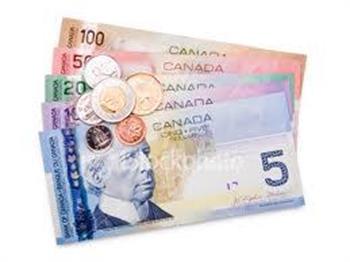 |
Canadian dollar advances, crude oil prices rise sharply for second day
 |
The Canadian Press
TORONTO - The Canadian dollar was higher Wednesday as crude oil prices moved past US$101 a barrel following signs of improving growth in China and the U.S.
The loonie was up 0.17 of a cent to 98.67 cents US.
The February crude contract on the New York Mercantile Exchange gained 95 cents to US$101.66 a barrel, on top of a $2 jump Tuesday.
Prices had jumped after China, the world’s second largest economy, reported 8.9 per cent growth in the fourth quarter, slower than the previous quarter but strong enough to indicate it would avoid an abrupt slowdown. Retail and factory production improved while oil demand was up 6.4 per cent in 2011 from 2010, according to data cited by Barclays Capital.
In the U.S., government data showed manufacturing in New York expanded at the fastest pace in nine months.
Analysts said higher oil was also supported by tension between Iran and Saudi Arabia, as well as a move by France to accelerate the EU’s implementation of an embargo on Iranian oil exports.
Saudi Oil Minister Ali al-Naimi has said Saudi Arabia was ready to pump more oil if needed to make up for a shortfall in Iranian exports. That came as Iran warned Gulf nations not to make up any shortfall and that it may shut the Strait of Hormuz, which is used to transport about a fifth of the world’s oil.
There was little change in other commodity prices as March copper was unchanged at US$3.73 after the Chinese economic report in particular sent the metal jumping nine cents Tuesday. China is the world's biggest copper consumer.
And February gold on the Nymex dipped $1.50 to US$1,654.10 an ounce.
Investors also digested a warning from The World Bank which warned Wednesday of a possible slump in global economic growth. It also urged developing countries to prepare for shocks that could be more severe than the 2008 crisis.
The bank cut its growth forecast for developing countries this year to 5.4 per cent from 6.2 per cent and for developed countries to 1.4 per cent from 2.7 per cent. For the 17 countries that use the euro currency, it forecast a contraction, with a growth outlook to be negative 0.3 per cent from growth of 1.8 per cent.
..
556 page views
|
|
|
|